May 21, 2025 | 04:15 GMT +7
May 21, 2025 | 04:15 GMT +7
Hotline: 0913.378.918
May 21, 2025 | 04:15 GMT +7
Hotline: 0913.378.918
On July 22, in Lam Dong province, the Administration of Forestry (MARD) coordinated with the Vietnam Macadamia Association and related units to organize the conference to implement the Macadamia Sustainable Development Project from 2021 to 2030, with a vision of 2050.
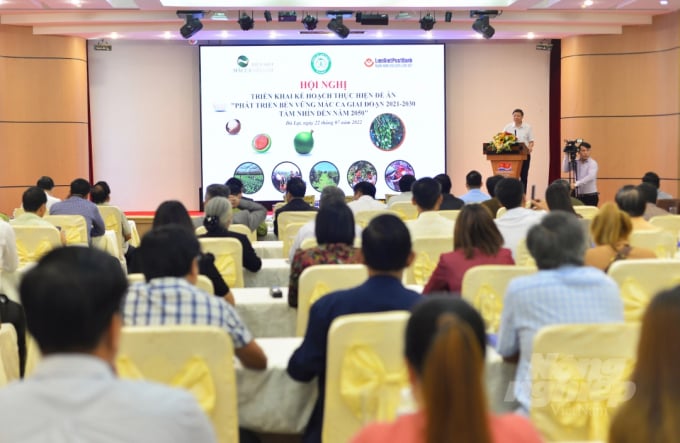
The conference to implement the Macadamia Sustainable Development Project from 2021 to 2030, with a vision of 2050 held in Lam Dong. Photo: Minh Hau.
According to the MARD, macadamia is a significant and multi-purpose forestry tree. The macadamia tree has a lifespan of 50-60 years. As of May 2021, the country has about 28 provinces growing macadamia in a total area of over 18,000 ha. For macadamia 10 years old and older, the yield in the Northwest reached 3 tons of fresh seeds/ha of pure planting and 2.1 tons of fresh seeds/ha of intercropping.
In the Central Highlands, the yield for macadamia 10 years old and older reached 4 tons of fresh seeds/ha of pure planting and 2.8 tons of fresh seeds/ha of intercropping. According to MARD, the output of macadamia in 2021 in the Northwest will be about 1.6 thousand tons. The output in Central Highlands will reach 6.5 thousand tons and output in other regions will reach about 369 tons.
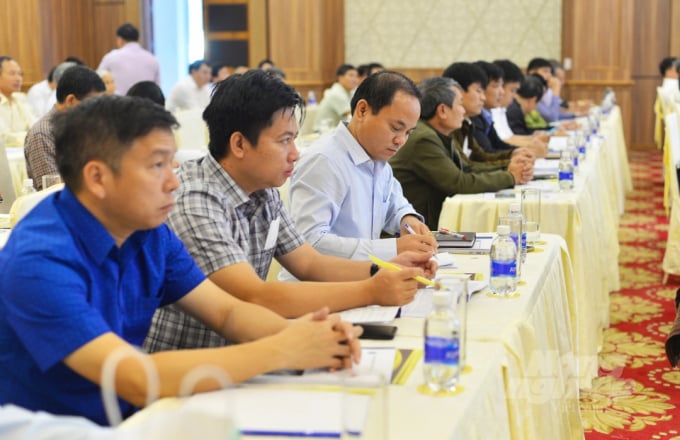
Representatives of departments, branches, businesses, cooperatives, and people... from all provinces and cities in the country attended the conference. Photo: Minh Hau.
Mr. Trieu Van Luc, Director of the Department of Forest Development (Administration of Forestry) said that in March 2022, the Prime Minister decided to approve the Macadamia Sustainable Development Project from 2021 to 2030, with a vision of 2050.
Accordingly, the project aims to develop macadamia into an effective and sustainable production industry, contributing to the strategic implementation of sustainable agricultural and rural development in the 2021-2030 period, with a vision for 2050. The output of processed macadamia nuts will reach about 130 thousand tons of nuts in 2030 and reach 500 thousand tons in 2050. The output of processed macadamia nuts will reach about 130 thousand tons in 2030 and 500 thousand tons in 2050. The export value will reach $400 million in 2030 and $2.5 billion in 2050.
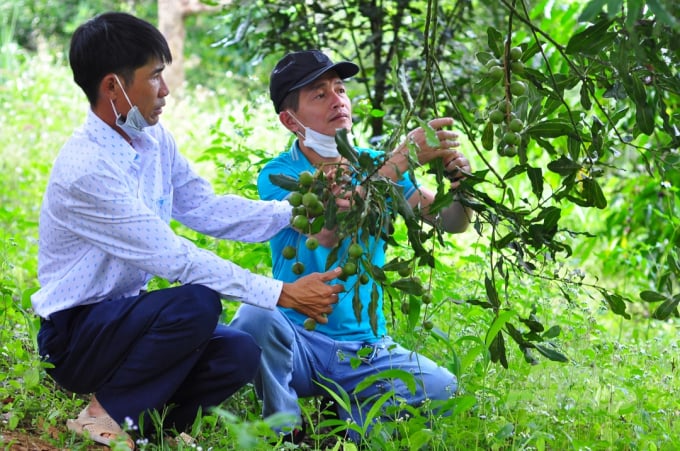
By 2030, the country’s production area is expected to reach 130 to 150 thousand ha and concentrate mainly in regions such as the Northwest and the Central Highlands. Photo: Minh Hau.
According to Mr. Trieu Van Luc, the country’s production area will reach 130 to 150 thousand ha and concentrate mainly in regions such as the Northwest, the Central Highlands, and other regions. The country’s production area is expected to reach 250 thousand ha by 2050. Along with the area development, the increase in output encourages all economic sectors to invest in preliminary and processing items to increase agro-products value.
At the conference, Mr. Nguyen Lan Hung, Vice President of the Vietnam Macadamia Association said that our country’s macadamia has good growth and high yield and is a potential tree that contributes to the economic development of the people. The macadamia also contributes to hunger eradication and poverty alleviation in highland, border, and low-population areas.
This is also a crop that contributes to greening bare land and hills. Professor Nguyen Lan Hung said: "Recently, the Macadamia Association has coordinated with local authorities to build and develop macadamia. We also provide seedlings to help border posts in the Central Highlands, Northwest, Northeast, and some macadamia growing localities for economic development."
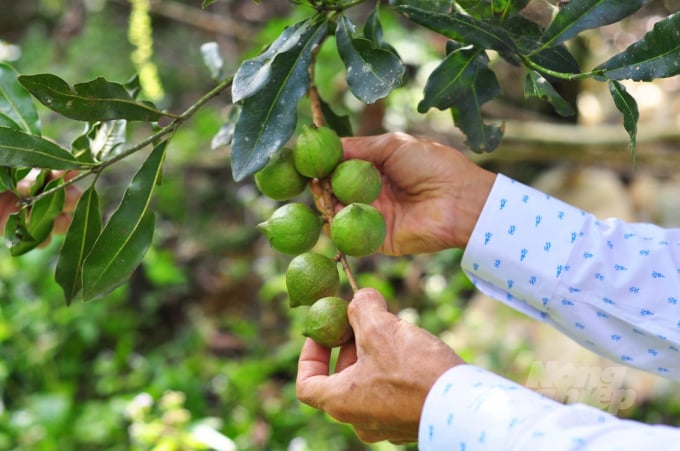
In the Central Highlands, the yield for macadamia 10 years old and older reached 4 tons of fresh seeds/ha of pure planting and 2.8 tons of fresh seeds/ha of intercropping. Photo: Minh Hau.
According to Professor Nguyen Lan Hung, Macadamia originates from the forest, but when planted for economic purposes, it is necessary to comply with agricultural processes. It is necessary to plant macadamia in places with suitable climates and soil, and the variety must meet the standards. Each garden should plant 2-3 varieties for proper development.
The Vietnam Macadamia Association asked MARD to continue research and issue policies to develop sustainable macadamia, improve seed production capacity, and research varieties for suitable natural conditions, farming processes, and each region’s customs. The association also recommended MARD establish specialized research institutes on macadamia. Specialized research institutes will study the problems of pests and diseases on macadamia trees to have an effective farming plan. Simultaneously, this serves the creation and protection of brands, supporting businesses to build ancillary services such as fertilizers, and building processing plants to improve product value and expand markets.
According to the Department of Forest Development, currently, MARD has offered solutions such as breeding research, introduction, and testing. These solutions strived to diversify the macadamia varieties to improve productivity, quality, and economic efficiency, resist pests and diseases, and adapt to ecological zones.
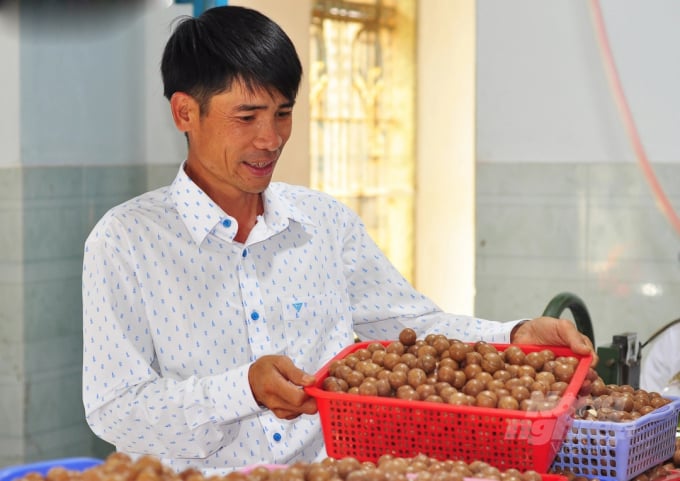
In the “Macadamia Sustainable Development Project from 2021 to 2030, with a vision of 2050”, the export value will reach $400 million in 2030 and $2.5 billion in 2050. Photo: Minh Hau.
At the same time, the association requested to produce a system of top-line trees, focusing on the Northwest region to have enough materials for seed production. They also requested to build and transfer the process of single-seed cultivation and intercropping of macadamia for each region. The macadamia production process with advanced technology, meeting the VietGAP, GlobalGAP process…
Mr. Trieu Van Luc, Director of the Department of Forest Development (Administration of Forestry) said that for the consumption market, localities need to support and build brands of macadamia products with geographical indications. The localities should also implement trade promotion activities and promote products. They also need to coordinate with ministries, the Vietnam Macadamia Association, and businesses to expand export markets and remove trade barriers. Implement measures to promote the official export of shelled macadamia nuts and kernel products, and deep-processed into the markets of other countries.
According to MARD, the world's demand for macadamia products is increasing. It is forecasted that by 2025, the market will need about 220 thousand tons of macadamia kernels, equivalent to 850 thousand tons of fresh nuts. Currently, the world demand for macadamia is four times higher than the total production. In Vietnam, the potential for expanding the market share of macadamia in Japan, Korea, China, the US, the Netherlands, and Germany is still huge. In addition, compared with many major macadamia exporting countries like Africa and South America, Vietnam has the advantage of participating in free trade agreements with most import markets.
Translated by Hoang Duy

(VAN) Japan's grant aid project contributes to capacity building, promoting organic agricultural production, and fostering sustainable community development in Dong Thap province.

(VAN) For years, the CRISPR-Cas9 genome technology has been reshaping genetic engineering, a precision tool to transform everything from agriculture to medicine.

(VAN) Vietnam aims to become a 'leader' in the region in the capacity and managing effectively soil health and crop nutrition.
![Reducing emissions from rice fields: [Part 1] Farming clean rice together](https://t.ex-cdn.com/nongnghiepmoitruong.vn/608w/files/news/2025/05/05/z6509661417740_a647202949c539012a959e841c03e1d3-nongnghiep-143611.jpg)
(VAN) Growing clean rice helps reduce environmental pollution while increasing income, allowing farmers to feel secure in production and remain committed to their fields for the long term.
/2025/05/19/5136-1-144800_230.jpg)
(VAN) The Nghe An Provincial People's Committee has just approved the list of beneficiaries eligible for revenue from the Emission Reductions Payment Agreement (ERPA) in the North Central region for the year 2025.

(VAN) 14 out of 35 domesticated elephants in Dak Lak province have had their living conditions improved, with 11 of them currently participating in the non-riding elephant tourism model.

(VAN) Muong Nhe Nature Reserve hopes that being upgraded to a national park will lay the foundation for forest protection efforts to be carried out in a systematic, modern, and sustainable manner.